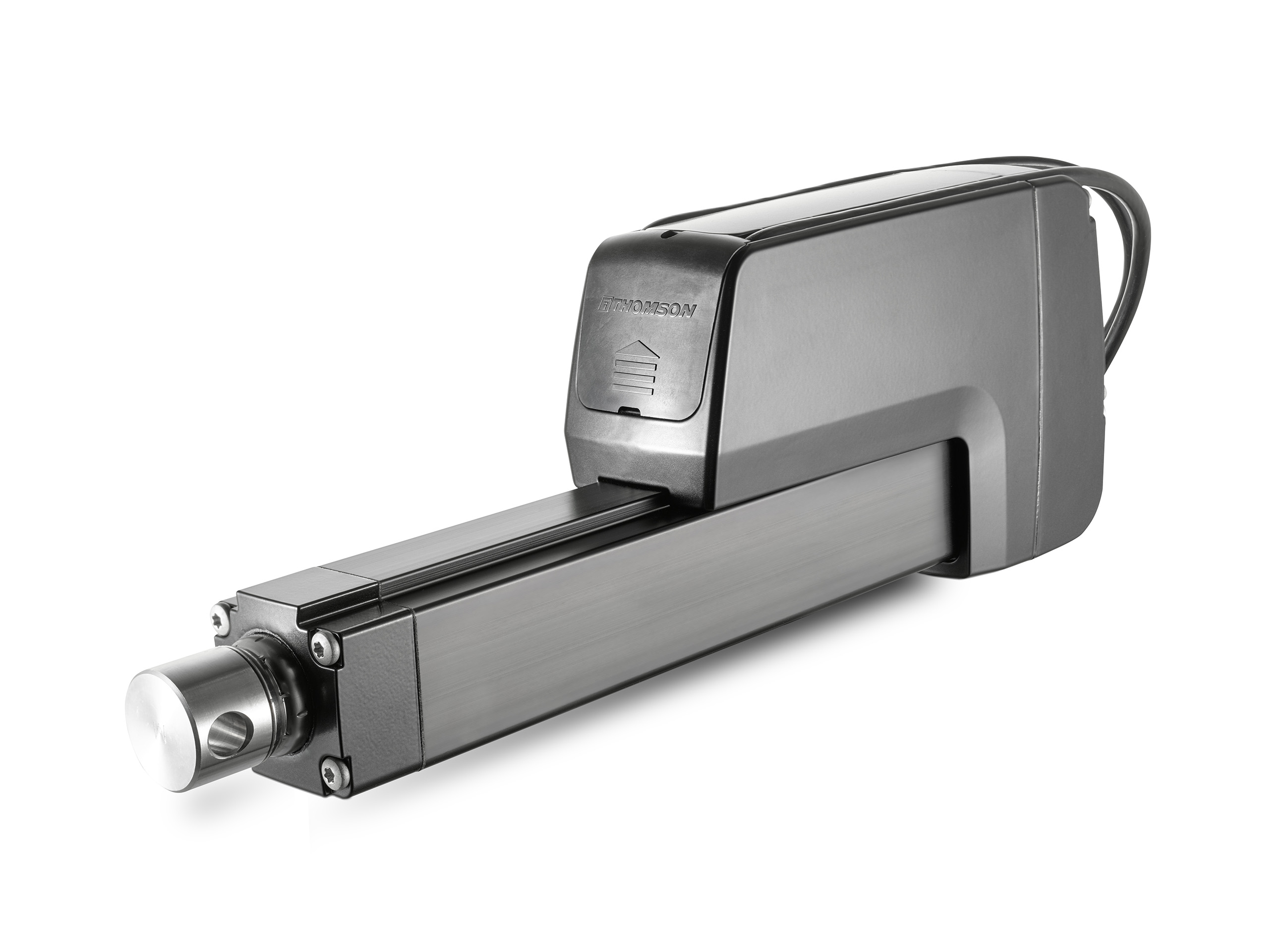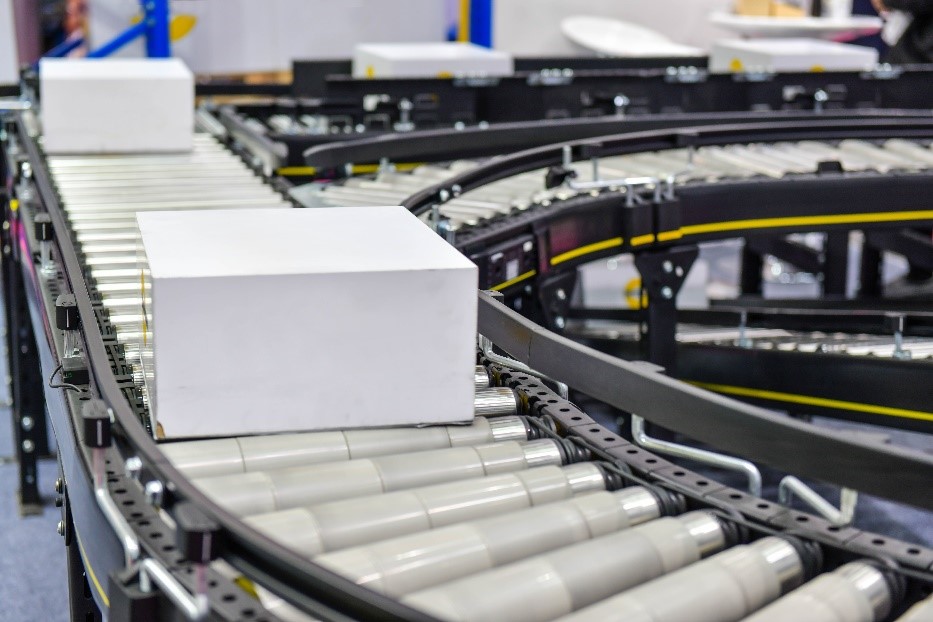Traditionally, linear motion system designers implementing high-duty-cycle motion had to choose between hydraulic, pneumatic and electromechanical systems. Each technology did the job but came with specific limitations relative to the support infrastructure required to drive/control them. This can include frequent maintenance or high upfront costs for things like servo drives/encoders, compressors, and hydraulic power units, as well as accessories and piping installations. Now, however, a new generation of long-life electric linear actuators has emerged to give designers more flexibility for high- duty-cycle/lower-accuracy motion in applications for which traditional actuators were previously cost-prohibitive or substandard in their duty cycle ratings/abilities.
Actuator life is a function of its duty cycle, i.e., the percentage of time it can apply to its work, as calculated by the following equation:
Duty cycle (%) = (actuator on-time) / (on-time + off-time)
So, if the actuator operates for 15 seconds and then rests for 45 seconds during a 1-minute cycle, its duty cycle is calculated as: (15 s.) / (15 s. + 45 s.) = 15 / 60 = 0.25, or 25%.
Manufacturers issue duty cycle guidelines to help keep the actuator at rest long enough to prevent the motor from overheating and damaging actuator components. Duty cycles for hydraulic and pneumatic actuators tend to be in the 40 to 80 percent range, or even higher, with enough power. But that functionality is accompanied by a higher cost of operation.
Fluid power systems like those required to operate pneumatic or hydraulic actuators are complicated, and can be messy, labor-intensive, space-consuming and expensive to own/operate. Even the smallest system would require multiple support components backed by a system of tubing/hoses, valves and other major components. These systems are also typically far less energy efficient when compared to electro-mechanical equivalents.
Conventional electromechanical actuators that are commonly used to support higher-duty-cycle applications, likewise are not cheap. Requiring stepper- or servo-motor-driven prime movers means that this equipment comes at a high cost which can only be fully justifiable if high precision is also needed. Otherwise, they are somewhat overpriced for lower-precision industrial applications, which may cause some users to avoid automation entirely. Stepper- and servo-driven actuators also require connection to AC power, further limiting the use in mobile/robotic applications.
Thanks to recent advances in linear motion control, a new generation of long-life, DC-driven electric actuators are available at a price point that makes high duty cycle affordable for a new range of applications.
Inside a new generation long-life actuator
Long-life actuators take advantage of a unique combination of design features in order to perform for high-duty-cycle applications. First, instead of using servo, stepper or brushed electric motors, long-life actuators use brushless DC motors. Unlike a brushed DC motor, which would overheat at high duty cycles, the brushless DC motors generate essentially no friction. This enables a duty cycle of up to 35 percent or, depending on the load and ambient temperature, up to 100 percent.
Other features contributing to the actuator’s durability are double-circuit nuts and larger screws. They reduce another common point of actuator wear and extend cycles from 30 or 40 thousand to about one million, improving travel time by orders of magnitude. Additional life-extending design features include a strengthened screw and extra-angular contact bearings.
Together, these features result in an actuator that lasts 10 times longer than the traditional brushed motor-driven actuator that might otherwise have been deployed in transport-grade industrial applications while still at a fraction of the cost of the servo- or stepper-driven style. When compared to stepper- or servo-driven solutions, brushless DC motor-driven actuators tend to be more compact because they don’t need gearing configurations. Long-life actuators are also typically sealed for high- ingress protection and lubricated for life in the factory, thereby requiring zero additional maintenance.

The long-life Thomson Electrak® LL actuator is designed for high-duty cycle applications that do not need high precision. It features a DC brushless motor, larger shaft and screw supports, and other innovations that extend its life up to 10 times over brushed motor-driven actuators. It is also maintenance-free, able to withstand challenging environmental conditions, and can run on a 24V battery or rectifier.
Applications
Long-life actuators are best suited for applications in which the capability to perform frequent, back-and-forth or transport-type motion extensively is more important than complex, high-precision movement. This includes clamping, positioning, blocking, diverting or any basic application where linear motion can be deployed to improve/automate a process. For example, fixturing the weldment in place for a robotic welder often requires frequent manual positioning, clamping or rotation on multiple axes. The more often the fixturing needs adjustment, the more potential benefit can be gained from putting actuators on those axes.
Long-life actuators also contribute to improved ergonomics for operators. Just as electrically controlled seats on automobiles optimize seat comfort for drivers, assembly line operators may use an actuator to adjust a conveyor’s or workstation’s height to improve ergonomics and reduce workplace injuries.

On the factory floor, there are opportunities around every corner for high-duty-cycle applications that don’t require high precision. For example, diverting packages or other items on a conveyor can be easily assisted with the use of long-life electric actuators.
In an increasing number of factories, conveyors are being supplemented with automated guided vehicles (AGVs). In an automotive plant, for example, AGVs might deliver doors, hoods, hinges, bolts and other components to an automated assembly line on a 24/7 basis. Actuators could be deployed in numerous lifting, loading and positioning applications, which previously could not have been actuated cost-effectively. The high duty cycle option on mobile applications such as AGVs, which are often powered by contact with magnetic floor strips, also opens new possibilities for motion designers.

Long-life electric actuators have created a new, affordable solution for automated guided vehicles (AGVs), which can run all day and night and perform frequent linear motion tasks.
As the cost, reliability and flexibility benefits of long-life actuators become more apparent, designers will likely consider automating axes/functions that previously had not been feasible. Just as automobile seat controls were once available only for driver’s seats on top-of-the-line models, some newer models have electronic controls on every seat, front and back.
Freedom to actuate
McKinsey Global Institute (MGI) estimates1 that more than half of all current manufacturing activity is spent in “predictable physical” activity that can benefit from automation, with some applications such as welding, cutting and soldering having automation potential exceeding 90 percent. Taking advantage of this emerging opportunity will no doubt require some complex, high-precision actuation, while other opportunities may not. The emergence of long-life actuators gives motion system designers more freedom to choose actuation strategies that are best for their application.
1 McKinsey Global Institute. (2017) A FUTURE THAT WORKS: AUTOMATION, EMPLOYMENT, AND PRODUCTIVITY. MGI-A-future-that-works-Executive-summary.ashx (mckinsey.com).



